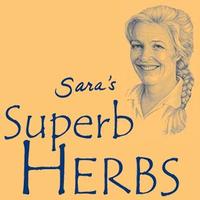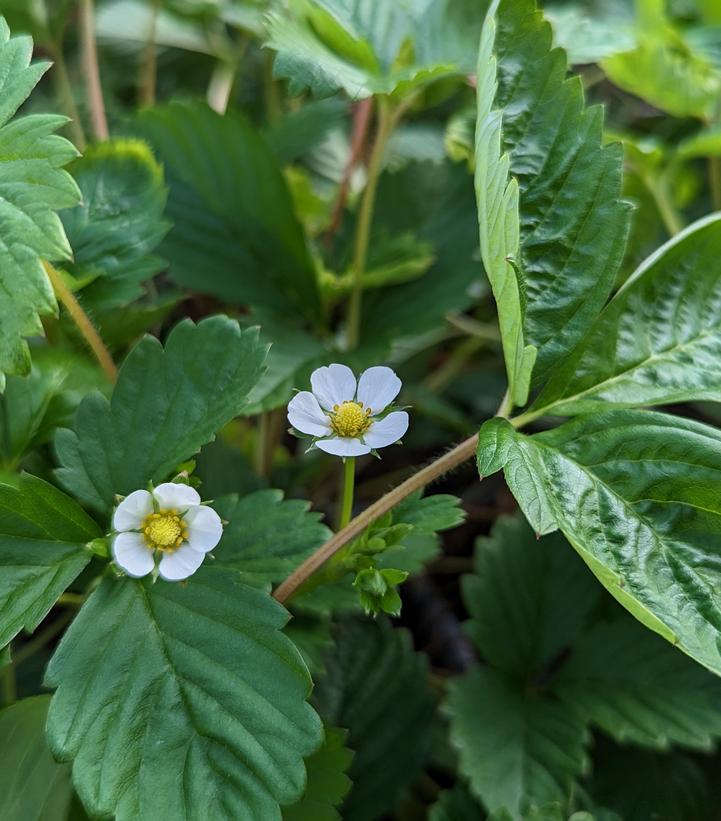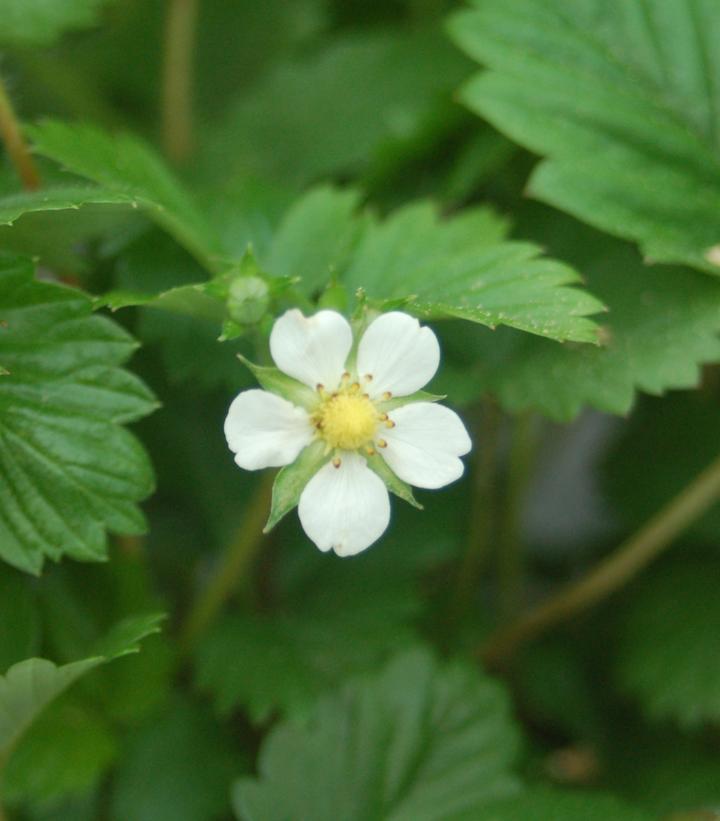« Previous Plant | Next Plant »
Fragaria vesca 'Alexandria'
Alexandria Woodland Strawberry (Alexandria Alpine Strawberry)
- » Very productive and vigorous
- » Aggressive grower and aggressive fruiter
- » Blooms early to mid May
- » Dime sized, sweet fruit that matures an orangy-red color.
- » Perfect for hanging basket or deck container use
- » Fruits long into the season
- » Easy to grow with no runners
- » Great fresh or in desserts

- Category:Edibles
- Breeder:Sara's Superb Herbs®
- Hardiness Zone:5-9
- Height:6-12 in
- Spread:10-15 in
- Bloom Color: White Shades
- Foliage Color: Green Shades
You'll be thrilled by the productivity and vigor of this runnerless selection that is an aggressive grower along with an aggressive fruiter. Loads of bloom grace this plant in early to mid May followed by a remarkable number of dime sized, sweet fruit that mature and orangy-red color. Unlike standard Strawberries, 'Alexandria' will continue to bloom and fruit throughout the summer and, because of its runnerless nature, it is an outstanding plant to use in a hanging basket or a container on a deck. Its fruit is great right off the plant or perfect for fresh desserts...just add a bit of sugar to really bring out its taste and juciness!
Foliage Color
| • | Green |
Maintenance and Care
| • | Vigorous |
Attracts Wildlife
| • | Attracts Songbirds |
Flower Color
| • | White |
Programs
| • | Sara's Superb Herbs |
Season of Interest (Flowering)
| • | Late Spring |
Habit
| • | Mounding |
Soil Moisture
| • | Average Water |
Additional Information about Fragaria vesca 'Alexandria'
Fragaria vesca is a cousin of the wild strawberry. It is found in woods and grasslands in Europe, western Asia, North America, and temperate areas in Chile. The word straw in strawberry comes from the verb to strew, referring to the tangle of vines with which the plant covers the ground. Cultivated strawberries were developed from the wild ones.
Harvest and Use: The berries, leaves, and roots of Fragaria vesca have all been used medicinally in the past. The root was once a popular household remedy for diarrhea and the stalks for wounds. Antioxidant properties have recently been discovered in the fruit, making them a valuable preventive for cancer. The leaves are gently astringent. You can make a tea with the leaves for diarrhea, digestive upsets, and to stimulate the appetite. Also, combine the leaves with St. John's wort and meadowsweet for mild arthritic pain and with celery seed for gout. Crushed berries make an emergency treatment for mild sunburn. Eat them for gastritis and as a liver tonic. Strawberry juice has antibacterial properties and was once used to fight typhoid epidemics. You can steep the berries in wine to take as a remedy for "reviving the spirits and making the hart merrie." I leave it to you to decide if it's the berries or the wine that makes the "hart merrie."
As a culinary, the leaves can be added to herbal teas for flavor. They are a good source of vitamin C. The fruit is delicious all by itself, can be added to summer drinks, or made into jams and syrup. Alpine strawberries are a natural bleach. Crush the fruit and mix it with baking soda to make a toothpaste for stained teeth. Drinking tea made from the leaves will do the same. Another remedy for discolored teeth applies the crushed fruit to the teeth and leaves it on for five minutes. The crushed berry can also be applied to skin blemishes and liver spots as a natural bleach to whiten skin.
Harvest the berries as soon as they ripen. Gather leaves throughout the season. They can be used fresh or dried.
Growing & Maintenance Tips for Fragaria vesca 'Alexandria'
Cultivation and Propagation: Alpine strawberry is a low-growing, compact perennial about 10 " high with a spread of 8". The leaves are long-stalked with three coarsely-toothed leaflets. Flowers are round-petaled in flat clusters on a separate stalk from the leaves. The fruit is a small, scarlet, cone-shaped berry studded with tiny, brown seeds. They have a fragrance and taste more delicate than the larger cultivated berries.
The plants like humus-rich, acid soil in a sheltered site in sun or partial shade. They are hardy to zone 4, but deteriorate after a few years and need replacing. Plant in the garden as a border or in outdoor containers where it's very happy because it doesn't put out runners like most strawberries.
Alpine strawberries reseed profusely from the seeds found in the skin of the fruit. It is not difficult to grow alpine strawberries from seed if you remember to freeze the seed for 3 to 4 weeks before sowing. Another option is to sow the seed out in the fall. Alpine strawberries grow quickly and are everbearing. Once the fruit appears, the plant will continue to bear all season. It is worth the considerable work it takes to harvest the fruit because of their succulence and perfume.
Pest-free, but cover with netting once the fruit sets to discourage hungry birds and animals.

